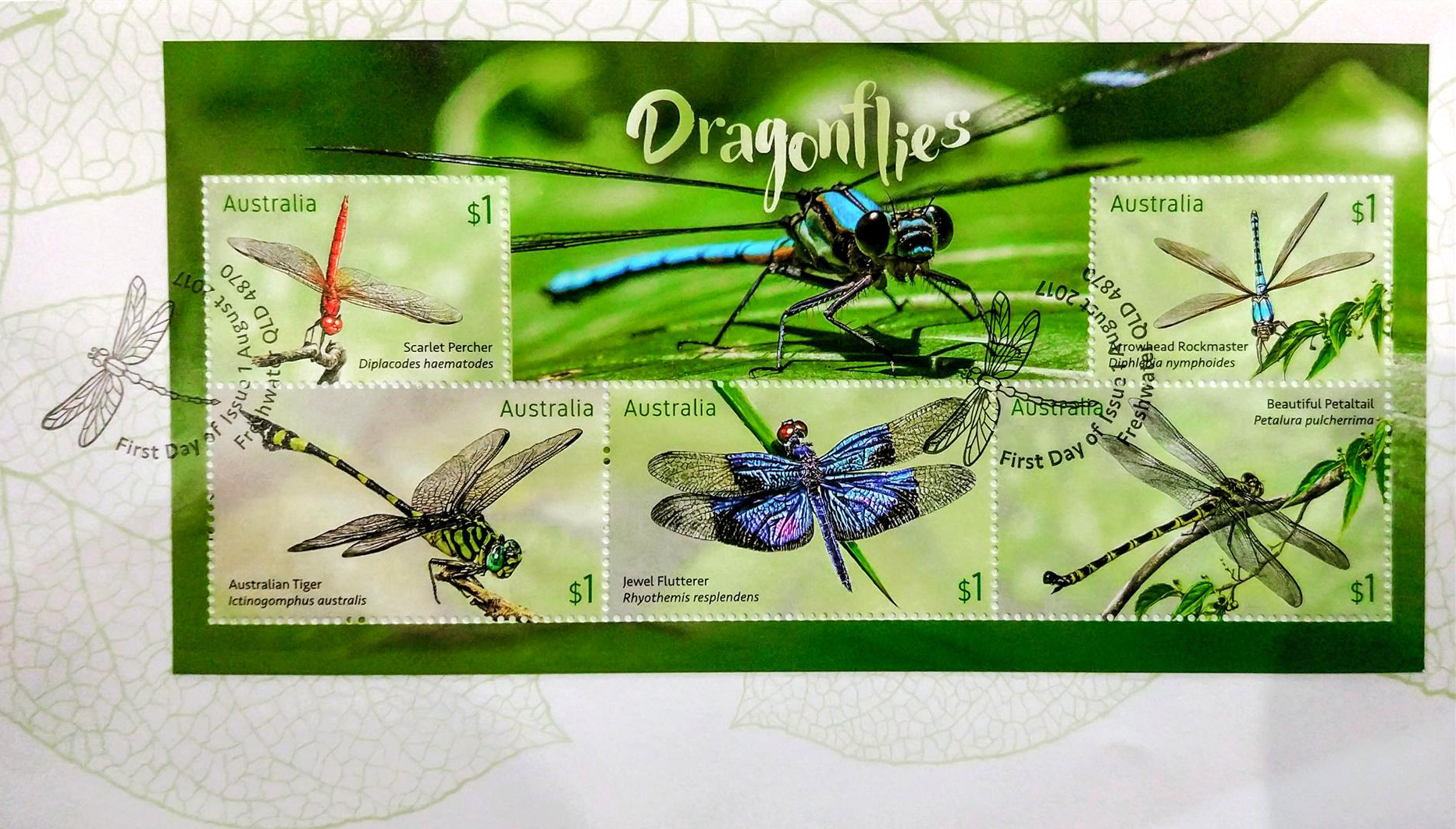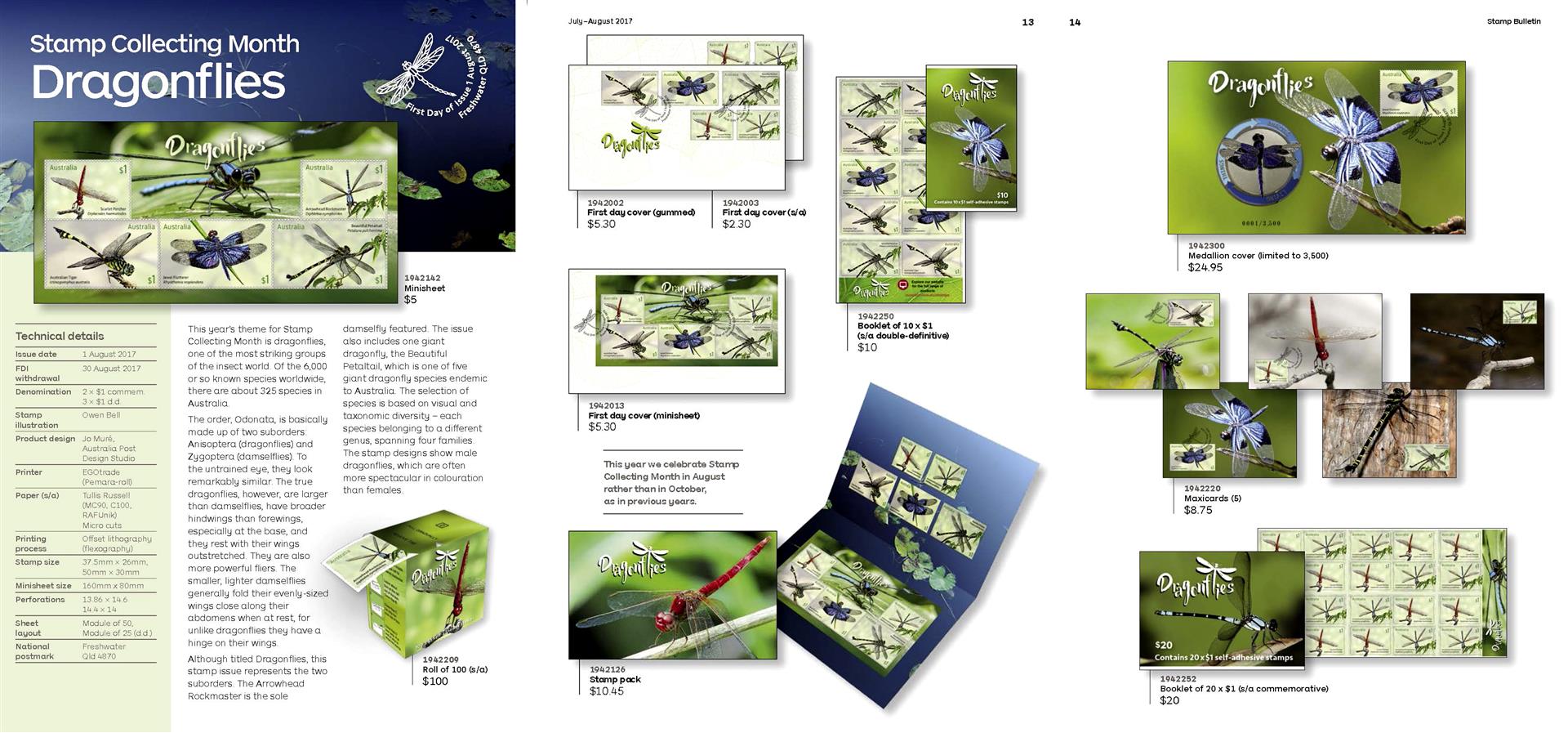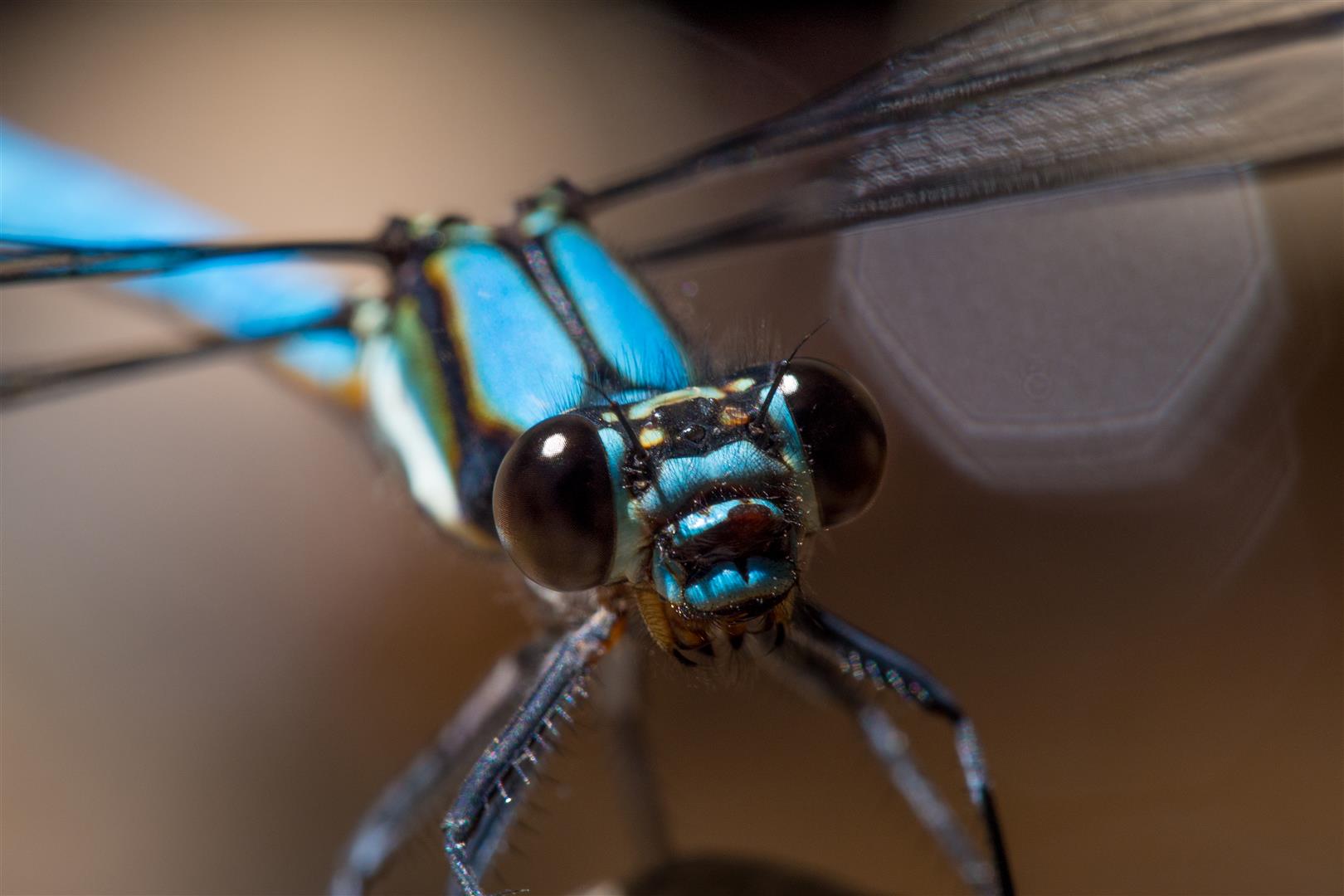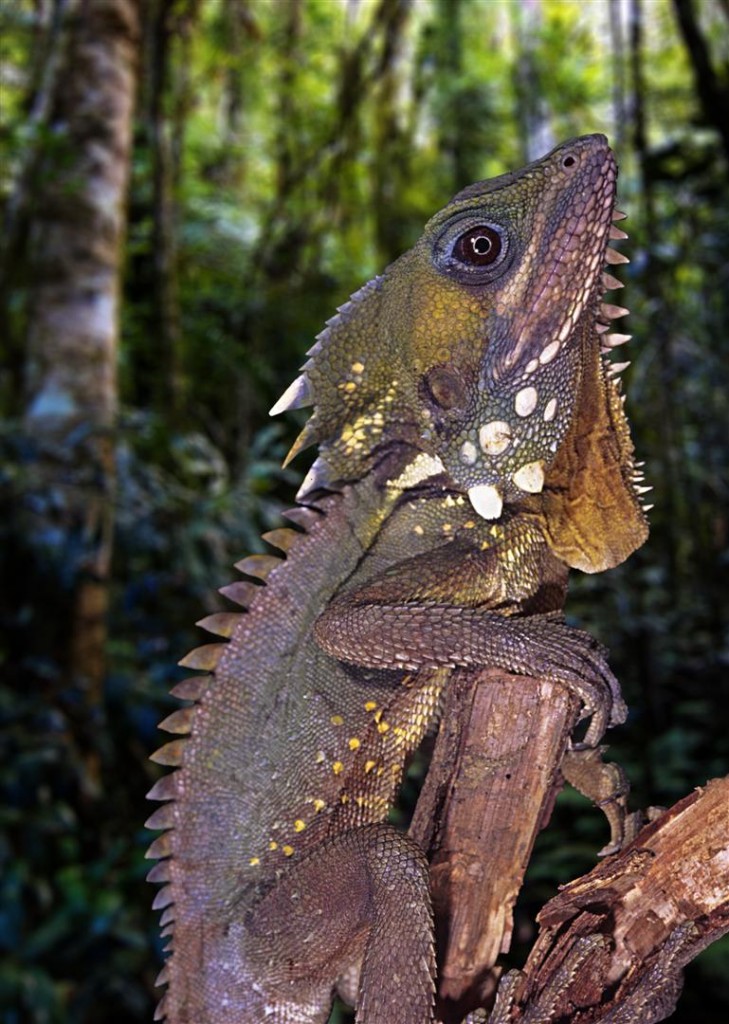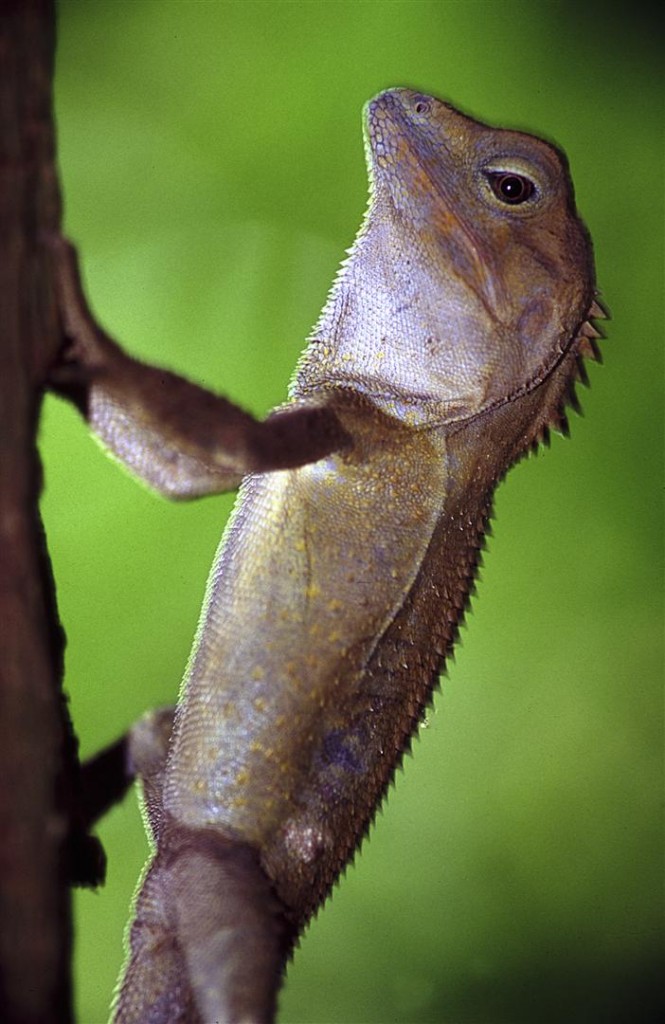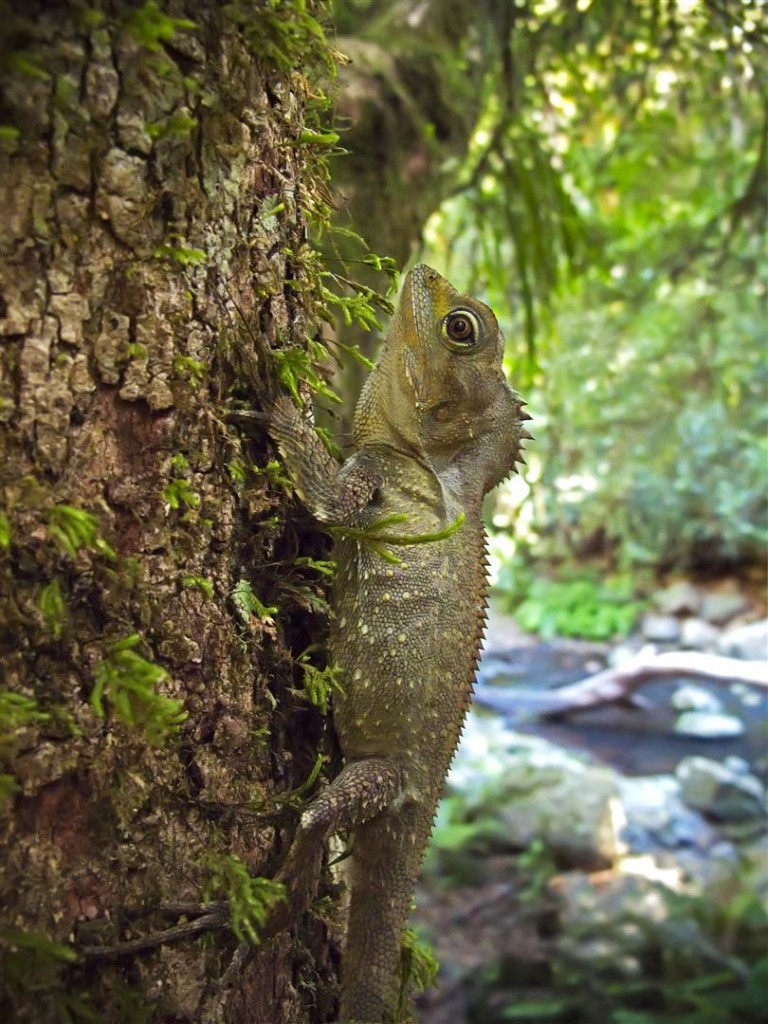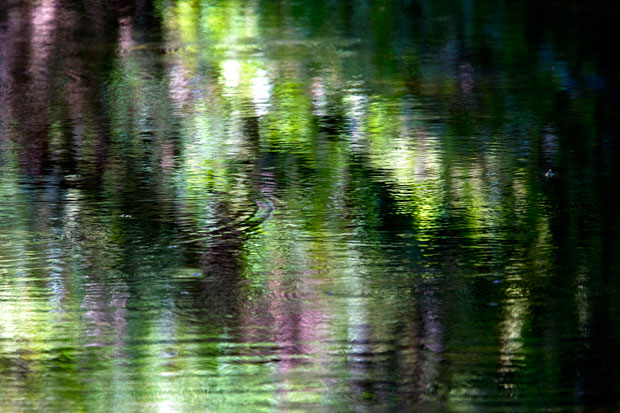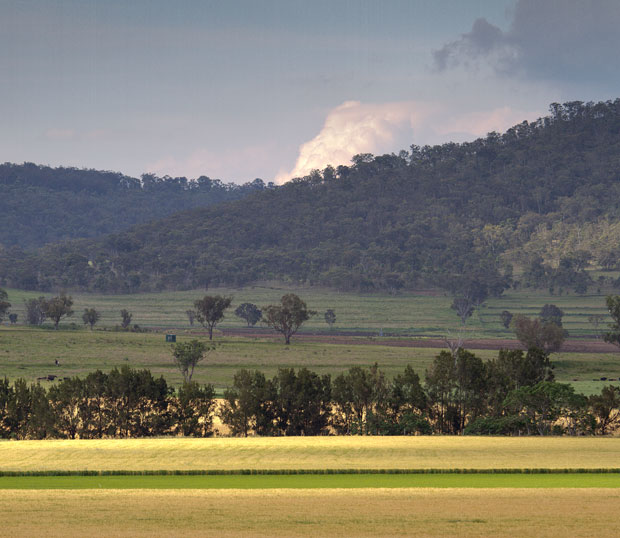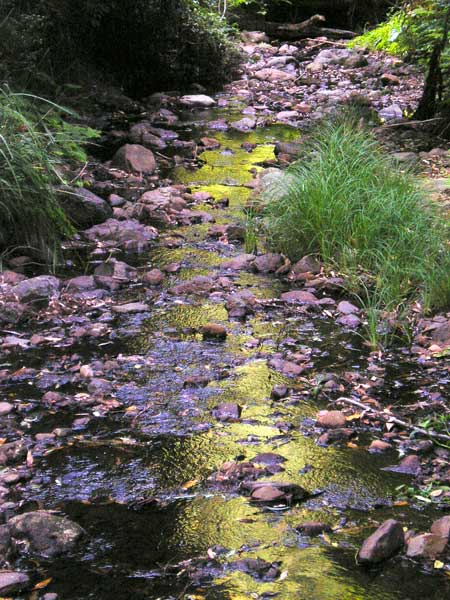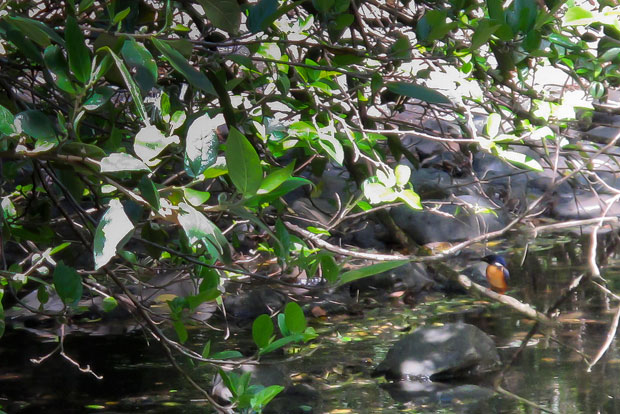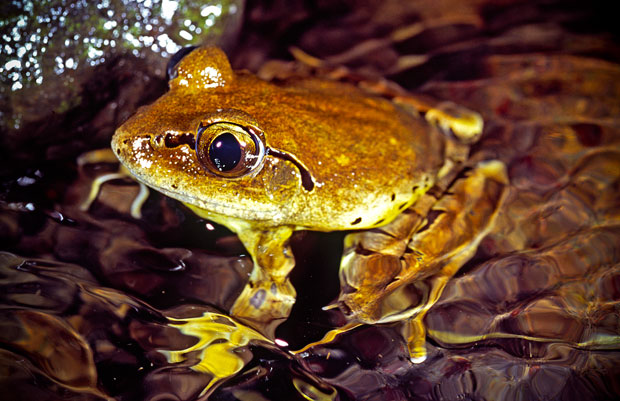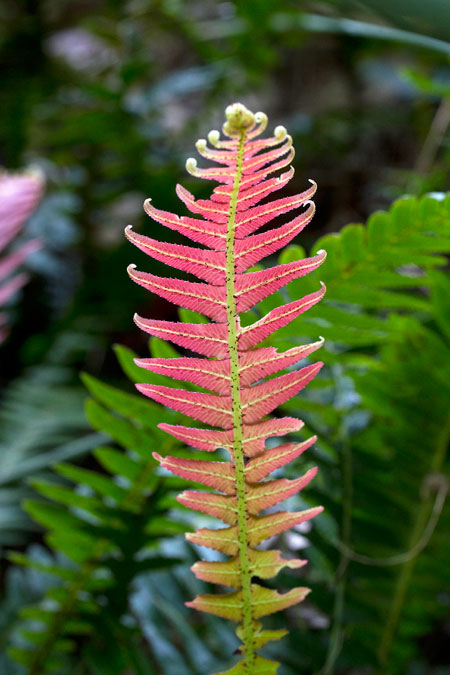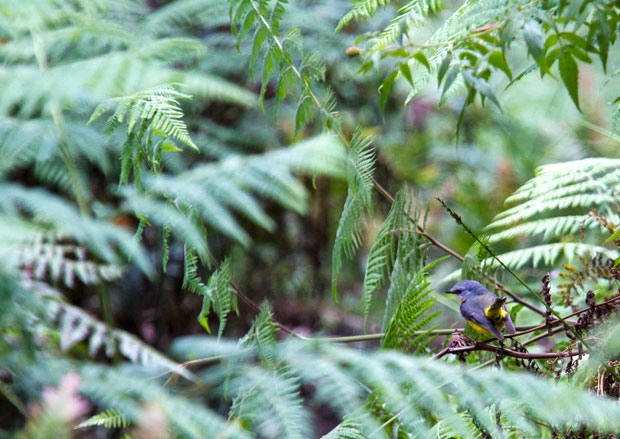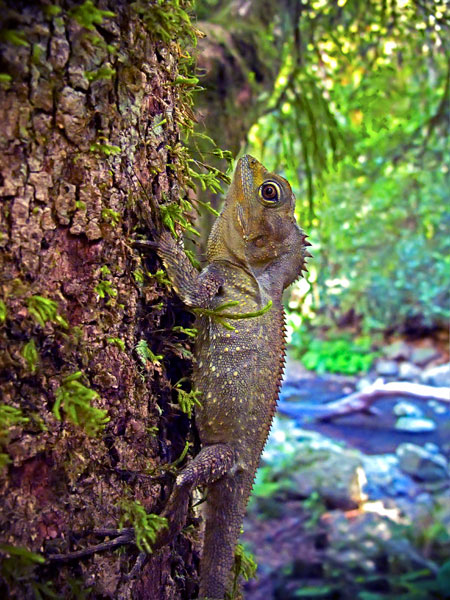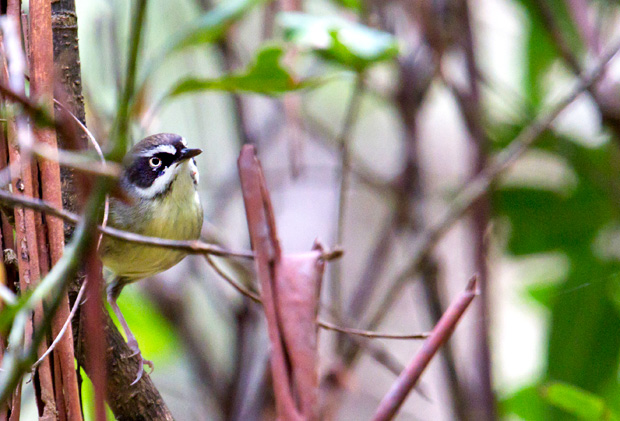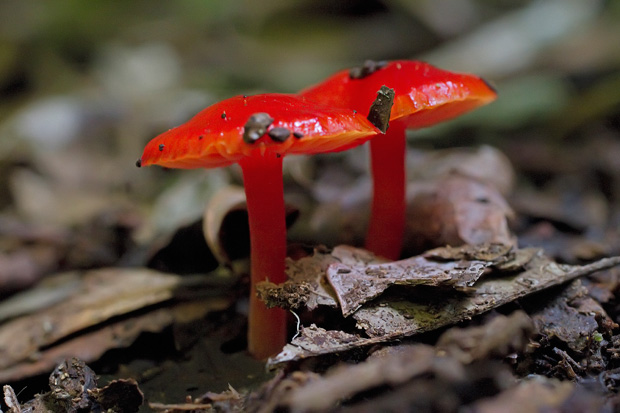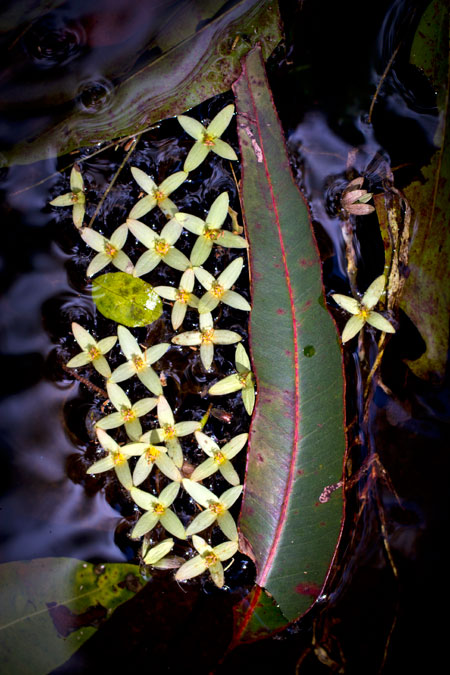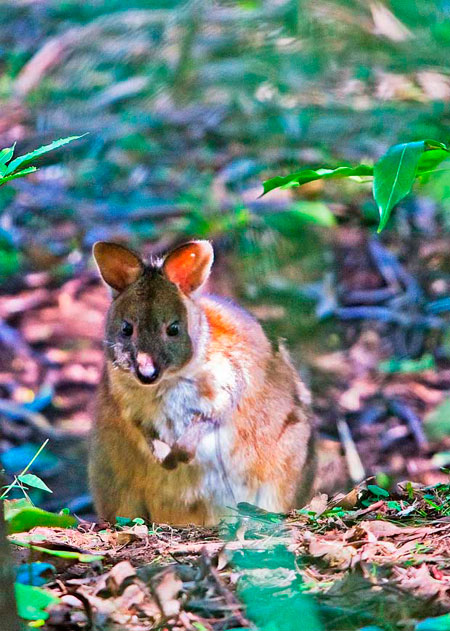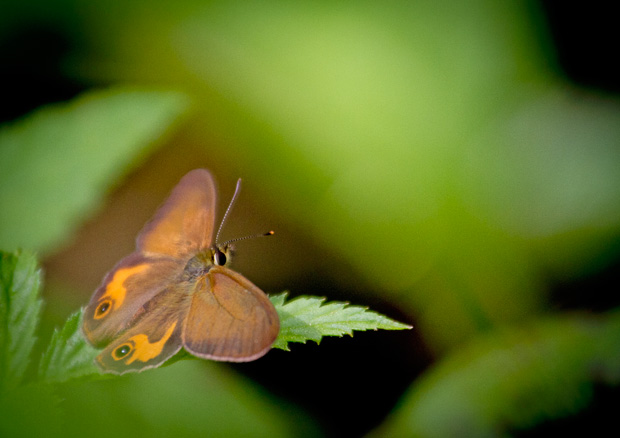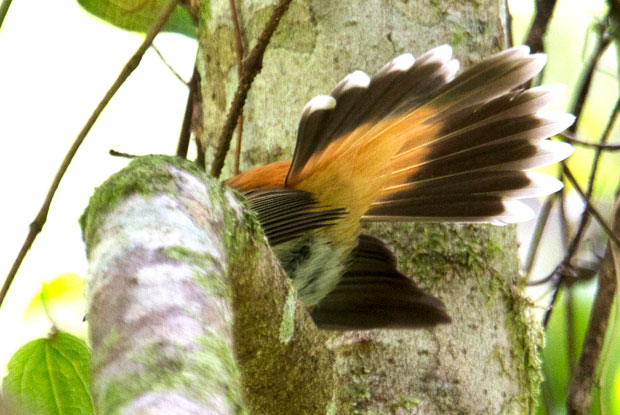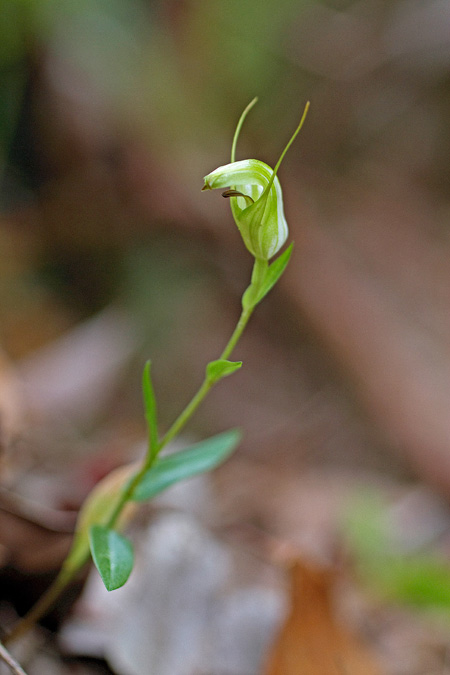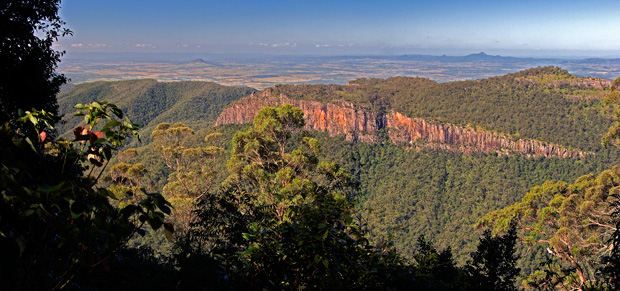A beautiful set of Australian postage stamps, featuring dragonflies and damselflies, was released in August 2017. One of my images, of a damselfly known as a Whitewater Rockmaster, was included on the first day cover and the stamp set packaging.
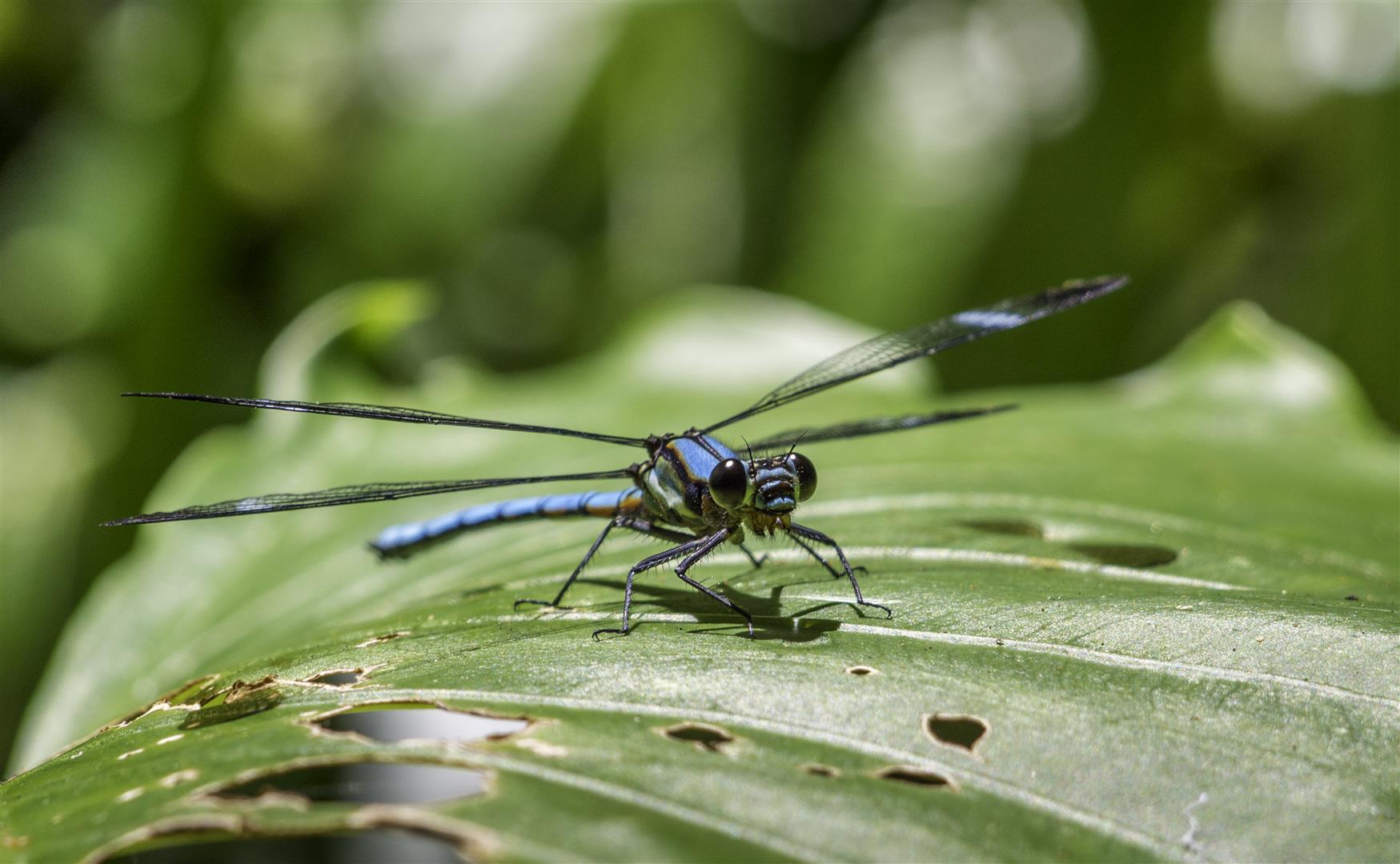
Whitewater Rockmaster (Diphlebia lestroides), Goomburra National Park. This striking insect is one of Australia’s largest damselflies. Photograph by Robert Ashdown.
From the Stamp Bulletin, Issue 347, July-August 2017:
This year’s theme for Stamp Collecting Month is dragonflies, one of the most striking groups of the insect world. Of the 6,000 or so known species worldwide, there are about 325 species in Australia.
The order, Odonata, is basically made of two suborders, Anisoptera (dragonflies) and Zygoptera (damselflies). To the untrained eye, they look very similar. The true dragonflies, however, are larger than damselflies, have broader hindwings than forewings (especially at the base), and they rest with their wings outstretched. They are also more powerful fliers. The smaller, lighter damselflies generally fold their evenly-sized wings close along their abdomens when at rest, for unlike dragonflies, they have a hinge on their wings.
Although titled Dragonflies, this stamp issue represents the two suborders. The Arrowhead Rockmaster is the sole damselfly featured. The issue also includes the Beautiful Petaltail, which is one of five giant dragonfly species endemic to Australia. The selection of species is based on visual and taxonomic diversity — each species belonging to a different genus, spanning four families. The stamp designs show male dragonflies, which are often more spectacular in colouration than females.
The Whitewater Rockmaster image was taken at Goomburra National Park. For more posts on this magic little patch of sub-tropical rainforest, see here and here. I’d better get back soon to let that rockmaster know that he’s famous.

